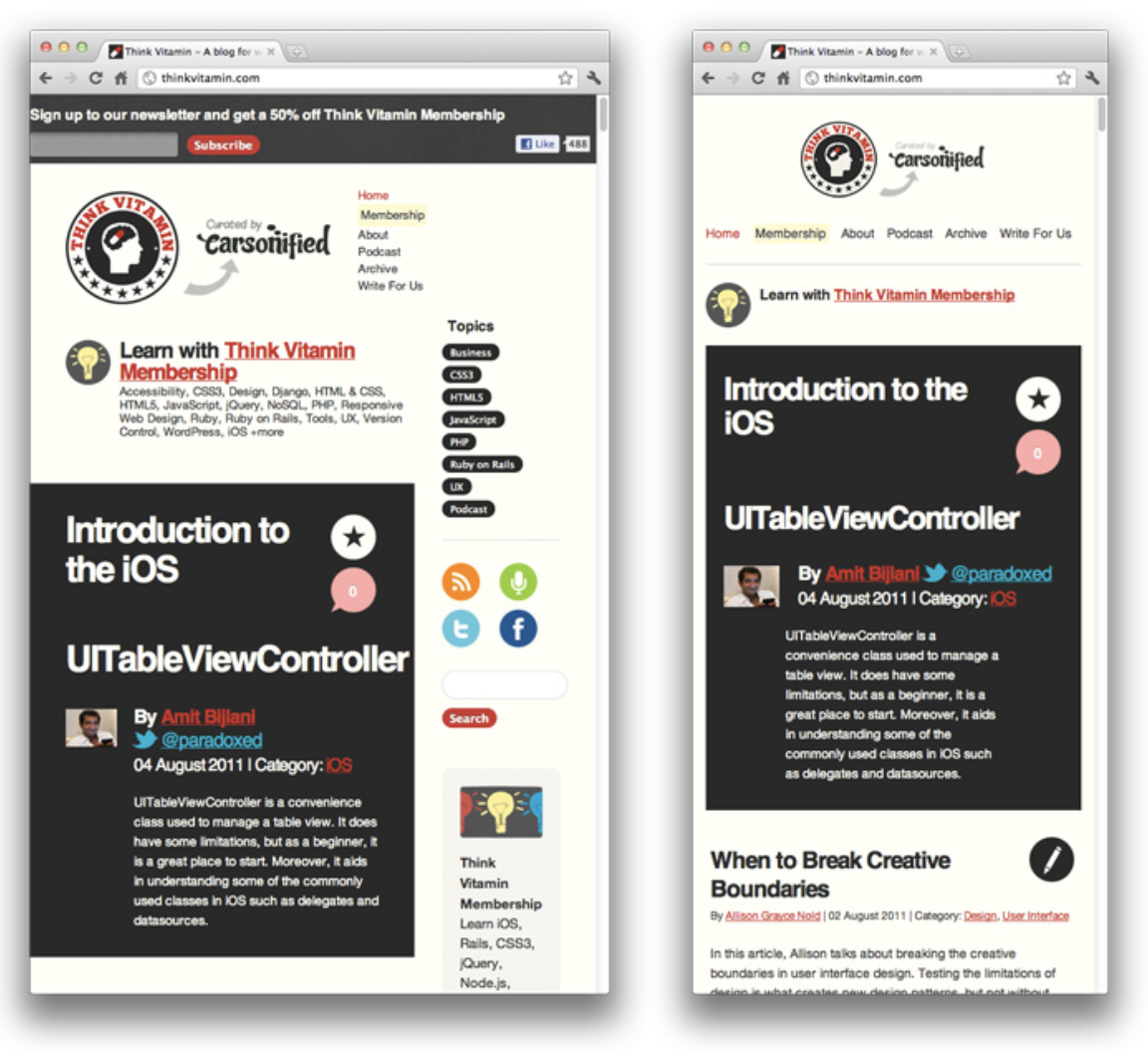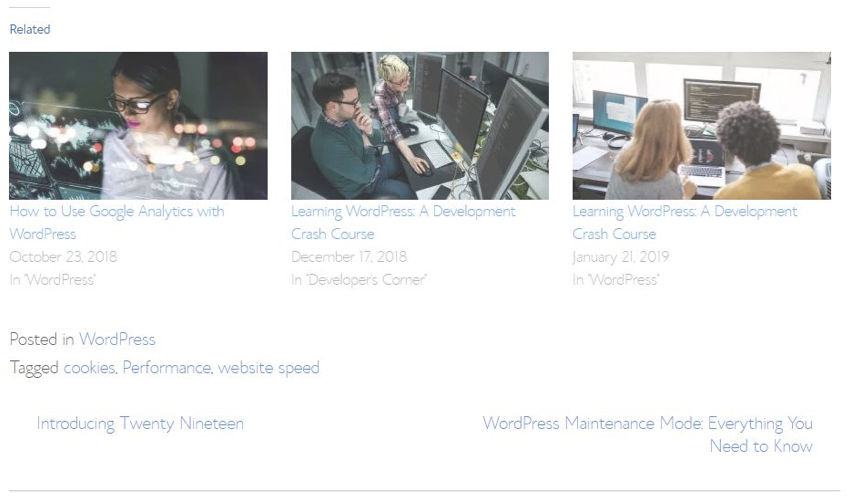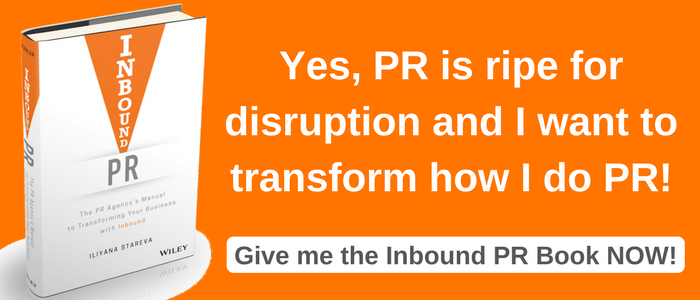 Continuing the SEO series, this is a guest post by SEO consultant Paul Teitelman.
Continuing the SEO series, this is a guest post by SEO consultant Paul Teitelman.
Blogging has evolved from a niche option to the standard of content marketing across just about every web niche you can think of, but this serves as a bit of a double-edged sword.
The popularity of blogging means that it’s very subject to diminishing returns, and perhaps nothing illustrates this better than SEO. With every single new blog that pops up, that’s a new piece of competition when it comes to getting eyes on your content through Google.
The key way to stand apart here is through making sure that you take the time not just to follow trends, but to make sure you have a fundamentally sound strategy for your SEO content.
So, whether you are putting together an editorial calendar for your own content or preparing some guidelines before hiring an outside content marketing service, here are some of the things you can do to help the SEO structure of your blog develop.
9 Tips to Improve Your Blog's SEO Structure
1. Begin With Your URL
The URL for any given page is indeed a moment for keyword optimization, but you need to balance this with other key goals: making it easy for viewers to understand what the content is about and what the structure of the site is like.
The easiest way to illustrate this is providing a hypothetical example of an SEO-unfriendly URL.
Let’s say that you had a site about pet care with an accompanying blog.
www.petcareblogexample.com/blog/cats/catfood/buyersguides/the-best-cat-food-available-41314315?
So, what exactly is wrong here? Let’s take a closer look.
- Automatic generation: All those numbers on the end make it impossible to remember the blog URL off the top of your head, as well as more difficult to share on social media.
- Too many subfolders. As blogs get larger, you want to be able to organize your content to make individual pieces easy to find. But this example goes too far, and makes the blog more difficult to navigate rather than anything else.
- Stop words: The usage of “the” in the URL serves no SEO purpose, and makes the URL difficult to remember.
So, in some cases, an optimized URL may not have your main site keyword, if it’s too long or complex.
2. Write Copy With A Goal In Mind
This next tip may sound a bit esoteric at first, but it’s something that every single blogger should be thinking about. What exactly are you hoping to get from putting this blog out there? If the answer is “exposure” or something similar, you’re already starting off on the wrong foot.
When it comes to improving your SEO copy, you always want to have a conversion in the back of your head. What exactly this is can vary, but it should be something beyond just getting more traffic for your site. Examples of these can include:
- Getting a download from one of your whitepapers.
- Getting the article shared on social media.
- The client making a purchase on the website/calling your company.
The reason why you want to brainstorm this goal on a blog-to-blog basis is that this is going to affect the keywords that you want to rank for. For example, if you sell tires, the keywords for a blog trying to get people to schedule a tire change will be different than a blog trying to inform people about how to install snow tires.
3. Place Keywords Wisely In The Front And Back End
On the topic of keywords, let’s cover the best ways to implement them both in the visible text and the back end of the website.
When it comes to ideal keyword placement, your goal should be to make sure that the keywords you want to rank for are mentioned early on, but also spread throughout the body of the text. This avoids any potential penalties for keyword stuffing. In addition, you also want to add your keywords into key places like subheadings in order to help your ranking.
For keywords on the backend, it can be a bit more involved. One of the most important things to implement, though, is a meta description. There is a right and wrong way to do a meta description. For the right way, let’s show off something from our own site.
Not only is it basic and to the point, but it also has our branded keyword as well as the general keyword early in the description. Poor meta descriptions, by comparison, either don’t have the proper keywords or are too long. If you go over the character limit, only part of the description will be visible in Google.
4. Don’t Spam Keywords In Tags
As an added note to this, there can be too much of a good thing. Wordpress SEO experts Yoast share how even some of the largest news and company sites are guilty of putting too many tags or categories on their content. They recommend trying to keep things down to 10 tags and 2 categories at max, and even then, only if you can justify it. When you’re trying to figure out what types of tags you should be trying to justify, our next tip is a great reference point.
5. Use Searcher Intent
Searcher intent is exactly what you would think it is: what a person is thinking about when they are searching for content. For example, we mentioned earlier an example about how an auto garage may focus on different keywords for an informational article versus one designed to promote a purchase. This factors into searcher intent. “Tire help near me” is a very different keyword than “new tires near me” despite appearances.
Part of the reason why implementing proper searcher intent is so important is the fact that people are quick to leave content that doesn’t interest them. One survey said that 43% of all blog readers mentioned skimming posts on some level. This is why you want to use a combination of subheadings, a strong title, and early keyword selection to communicate as early as possible what the article is. If you fail to do this, they may not read long enough to get to your call to action, negating the goal of the blog.
6. Optimize Your Page For Mobile Readers
Depending on the niche and demographic, mobile browsing has already overtaken desktop browsing, so it’s essential that you modify your keyword selection and website itself to accommodate this change. For keywords, the main change the advent of mobile browsing brings is a growing amount of local searches. This means keywords like x business near my town or x business are extremely valuable. You want to make sure that you are optimizing these or using schema markup to answer these questions in your meta description.
The other technical element is making sure that your site is either responsive or dynamic in order to adjust to mobile platforms. Responsive is the more time-consuming but less expensive option, while dynamic web design is more streamlined but expensive.
For example, in Treehouse’s guide to dynamic web design, they provide this image of responsive design in action:

This illustrates how the mobile format requires adjustments to be readable, which is essential when it comes to blogging. If you have a page that’s difficult to read, people will be quick to leave, which could impact your conversion rate. Along with investing in a responsive page for your blogs, other steps you can take to avoid this include:
- Making sure you space out your paragraphs and avoid the “wall of text.”
- Avoid oversized images that cause your page to load slower.
- Check for any outdated or broken plugins.
7. Don’t Neglect Images
Most people think of images as an accompaniment to the text and little more, but they can be an essential part of your SEO strategy if you utilize them properly. Much like the text on your website, there are multiple ways to do this, behind the scenes and front and center.
First and foremost is the technical side of things. Make sure that you compress and resize your images properly to avoid long loading times without compromising their appearance. A page that’s slow to load can actually impact your Google ranking.
What you may not know is that there is also an opportunity for you to implement keywords with your images. Through the file name of the image as well as captions and alt-tags, the images you use can actually be a concrete element of your SEO plan. The key here is to ensure that you use descriptive names so the search engine can accurately categorize them. For example, “man-eating-sandwich-at-table” is better than “sandwich12.” It’s also important to make sure the text you use complements the image, rather than just typing your entire keyword list in the tags of any image you use.
8. Write Longer Content
Considering that we mentioned before how people tend to skim blog content, this statement may come across as a bit of a surprise. However, one study showed that the average page-1 ranking blog content on Google comes in at roughly 1,900 words. There are a few reasons why this is the case.
- More detailed answers: We also mentioned in the beginning how blogging is suffering from diminishing returns. In some cases, that 300-word or 500-word blog isn’t enough to adequately answer the reader’s questions. As a result, when they find something that is more detailed and helpful, they are more likely to share it.
- Google’s algorithm: Note that quantity doesn’t trump quality. Google is placing a greater emphasis on trying to promote the strongest content possible, so, while longer content has a better chance of standing ahead, repeating yourself to hit that word count won’t work.
- Keyword integration: Longer content means more chances to add relevant links and more chances to add keywords, making it easier to rank on the technical end as well. Of course, all these keywords still need to be optimized to see the greatest effect.
9. Create A Strong Link Profile
One essential component of any SEO blog strategy is figuring out how to develop your link profile. Externally, this can be accomplished by trying to promote your blog on social media, or even send it to relevant names in your niche so they can share it. However, one thing that can be a bit more difficult is building your internal link profile. These are the pages that you should link to on your own side within each blog.
One of the best ways to build an internal link profile and improve the view experience at the same time is to create a section for recommended and accompanying articles. Look at this example from Bluehost.

The goal of a recommended section is to try and promote blogs that are tangentially relevant to the topic you are covering. For the blog above, the topic was whether or not WordPress uses cookies. As a result, the three topics linked to here are also relevant to WordPress newcomers. You can either manually select these or consider using a tool or plugin.
Note, though, that these tools will only be effective if you have strong and unique keyword profiles for each of your blogs.
It can be difficult to build a powerful SEO position from scratch, which is perhaps why the best way to treat it is as a series of smaller tasks.
Start by doing the research to try and find the best possible keywords for your audience, that also don’t have a lot of competition. Then, begin putting together a website that is not only optimized for these keywords on the back end, but also has the technical structure for people to enjoy it (mobile optimization, etc.). Then, you have the ability to make adjustments at both levels as needed, to raise your search engine ranking.







